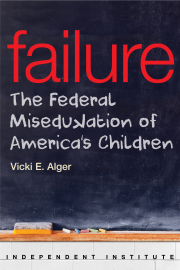Death, taxes, and rising college prices—these are among life’s few certainties.
Tuition and fee increases over the past five years at Oklahoma’s public higher education system are among the country’s highest, according to The College Board. The State Regents for Higher Education blame “underfunding,” but that excuse doesn’t hold water.
From 2008-09 through 2015-16, state funding dropped 17 percent, but tuition and fees jumped 38 percent, according to the regents’ own data.
Oklahoma isn’t an isolated example.
The Cato’s Institute’s Neal McCluskey found that nationwide college tuition price hikes either matched or exceeded state budget cuts in all but two years from 1992 through 2008. That pattern continued through 2013-14 with overall tuition increases far outpacing state funding declines, 31 percent compared with 18 percent.
So where’s the money going? Administration is one culprit.
Administrative positions and salaries are on the rise. In fact, Oklahoma ranks fourth-worst nationally for its non-instructional workforce (measured as a percentage of the state’s private-sector workforce).
The bloat is so bad that an online University Title Generator has been created that spits out satirical administrative positions such as Vice Provost for the Committee on Neighborhood Diversity with phony six-figure salaries. Sadly, these positions aren’t all that far fetched.
Of course, skyrocketing college prices are no laughing matter, but neither is blaming taxpayers for not shoveling out more money—particularly when Bureau of Labor Statistics projections suggest this administrative growth will continue unabated.
Research is another college cost driver, accounting for approximately 40 percent of reported instructional costs, according to Vance Fried, director of the Institute for the Study of Free Enterprise at Oklahoma State University. Shrinking the ranks of nonteaching research faculty and putting professors back to work teaching would help undergraduates access the courses they need while saving them $2,000 to $3,000.
The Oklahoma state regents say they’re working “tirelessly” to keep college affordable and reported more than $330 million in system-wide savings over the past five years.
With those funds, they could have offset lower state funding, frozen tuition and fees at 2011-12 levels, and still had some $100 million left over.
Instead, the regents kept raising tuition and fees.
Currently, around half of all undergraduates will take on more than $20,000 in debt. Meanwhile, up to two-thirds of them don’t complete their four-year degrees within six years—about the same rates as a generation ago.
What’s changed is that today’s undergraduates are paying a whole lot more to attend college.
Political leaders including former Indiana Gov. Mitch Daniels (now president of Purdue University), former Texas Gov. Rick Perry (who instituted a $10,000 bachelor’s degree), and former Oklahoma Gov. Frank Keating (one of the governors responsible for Western Governors University) have shown that significant cost savings can be achieved. More citizens can earn a degree with less debt or no debt at all.
Oklahoma taxpayers haven’t failed the system by “underfunding” it. The system has failed them by refusing to reform.









